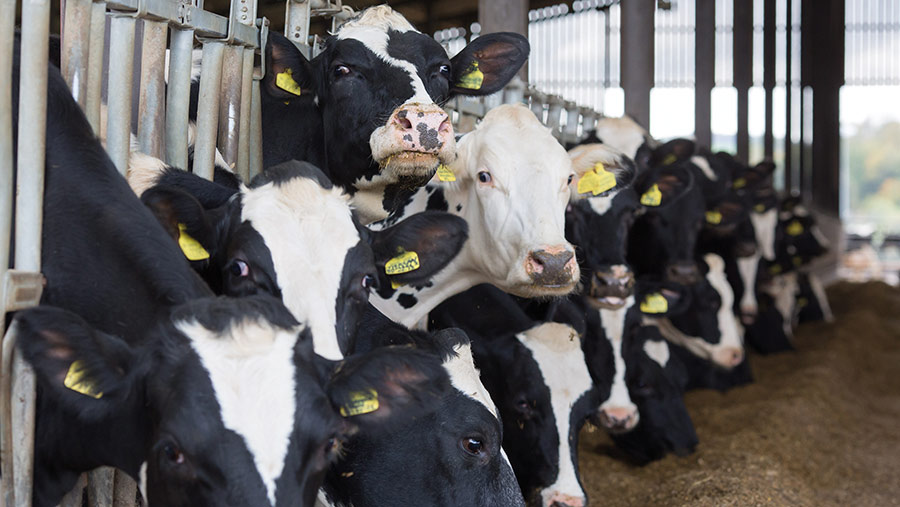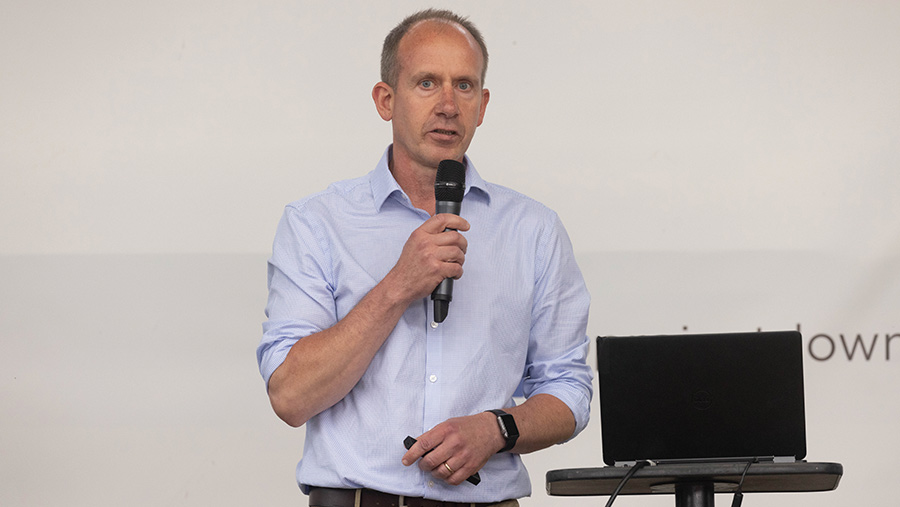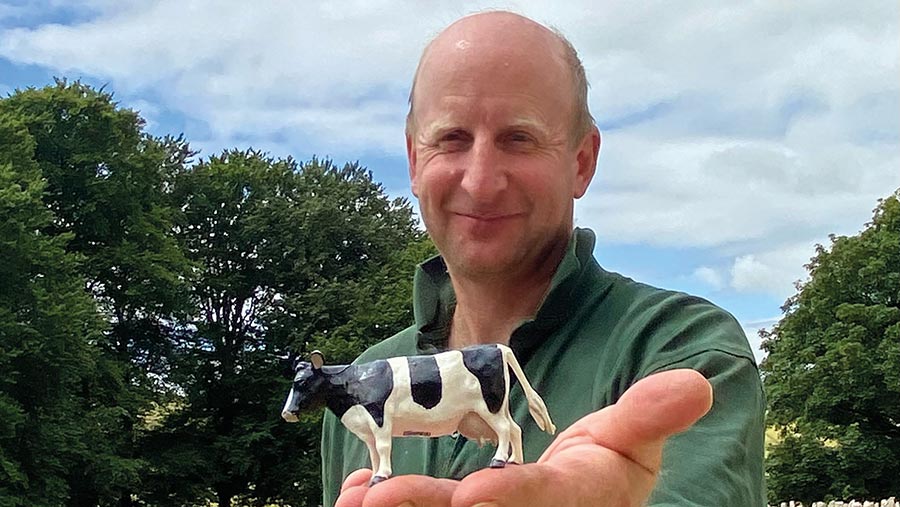Why big cows are inefficient and how to breed smaller stock
 © Tim Scrivener
© Tim Scrivener Cows are getting bigger. UK dairy farmers are feeding and managing the equivalent of nearly five extra cows for every 100 in their herds, compared with 30 years ago. And there is no sign of this trend abating, according to Marco Winters, head of animal genetics for AHDB.
Of course, the increase in cow size has occurred alongside vast increases in milk production.
And genetic trends for almost every other trait – from fertility and mastitis resistance to milk solids production and somatic cell counts – are all heading in a favourable direction. But the height and weight of cows continues to rise.
With the precision of modern breeding tools, there is no reason why improvements in production cannot be made without increasing size.
But all signs are that breeders and artificial insemination (AI) companies have not responded fast enough to the warning.
“Everywhere I go, farmers tell me they don’t want bigger cows, but all the genetic trends tell us that’s what they are breeding,” says Mr Winters.
This is in spite of the fact that a negative weighting for bodyweight is built into national breeding indexes such as profitable lifetime index (PLI) and should be pulling these traits in a downward direction.
Maintenance index
“AHDB’s maintenance index [MI] – a genetic score for liveweight – and hence the maintenance feed costs of keeping a cow – has been included in PLI since 2014,” he says.
“All other things being equal, it is always better to use a bull that has a lower MI and therefore transmits lower maintenance feed costs to his daughters.”
Despite its introduction, MI continues to rise, along with size, across the national herd.

© Tim Scrivener
“Over the past 30 years, MI has risen by at least 15 points, translating to more than 30kg genetic difference in the average weight of a cow in 2021 compared with a cow in 1991,” he says.
“This extra bodyweight means the average, 200-head, UK herd is feeding the equivalent of close to 10 extra cows every day.”
Ease of management
This also raises issues of ease of management, health and lifespan. Anecdotally, big cows:
- are more likely to go down and less likely to survive a fall
- have more fertility and calving problems
- do not live as long as their moderately sized counterparts.
And all these factors have an impact on carbon footprint, which inevitably increases as feed conversion and other efficiencies decline.
Then there are practical management issues such as cubicle and milking parlour size, which have had to be increased on so many UK farms just to accommodate the bigger cows.
Hugh Ratcliffe, GB general manager for Genus ABS, acknowledges there may have been insufficient choice in the past, but says this is changing.
“Now there is a far wider range of genetics within the Holstein breed that will allow you to make your cows smaller and lighter without the need to sacrifice production,” he says.
Moderate scores
However, although he sees a gradually increasing demand for bulls that transmit smaller stature, he believes there is a reluctance among some farmers, who have an inbuilt desire to see all the bars to the right on a linear-type profile.
He says: “Traditionally, farmers have always wanted right-hand linears, but this will give them taller, deeper, wider, more angular and more extreme cows.
“Breeding for body conformation extremes is not a great idea,” he continues.
“Too much height and strength in the chest and body makes them heavier. We don’t really want too deep or shallow, but something in between.”
Mr Winters agrees, and adds: “All the data tell us that it’s optimal to have moderate scores for stature, but importantly also for chest width, and in fact, the same goes for many other type traits.”
“We actually have to work really hard to stop cows getting bigger,” adds Mr Ratcliffe.
“But Sam Foot’s herd [see below] is a good example of what can be achieved with a concerted drive against increasing cow size.
“In his herd, he has kept genetic indexes below average for stature, but only just.
“At the same time, he has continued to improve genetic indexes for production, fertility and health.”
“Doing all of these things is a challenge,” says Mr Winters.
“But if the industry fails to act, dairy producers will find managing their cows becomes more and more difficult and efficiencies of production will decline.”
Case study: Sam Foot, Bayard Dairy, Dorset
Farm facts
- 1,000 Holsteins average 12,000 litres at 3.9% fat and 3.4% protein
- 100 Jerseys give 6,800 litres at 6.1% fat and 3.9% protein
- Choosing Holstein bulls below 0 for stature has maintained smaller-than-average cattle
- Finding enough suitable bulls to reduce cow weight and size is a struggle
Farmer Sam Foot, who milks 1,000 Holsteins and 100 Jerseys at Bayard Dairy in Dorset, has been trying to use breeding to reduce the size of his cows for the past 15 years.
Referring to his own herd, he says: “There is nothing really right about big cows – you just have that extra maintenance bodyweight to support every day of the year.”
He likens narrow cows to a fly half on the rugby pitch. “The taller, skinnier person is much easier to tackle and knock over than the shorter, openside flanker, just as the short, robust cow, with a lower centre of gravity, stays on her feet,” he says.

© Sam Foot
However, reducing cow size in his herd has not always been easy.
“There’s probably not enough choice,” he says, although he cites the bull, Denovo 7921 Atrium, whose daughters are now entering the herd, and whose -2.43 score for stature means they will be substantially below the national average height.
“It’s hard to find enough bulls like this when there are several other traits you’re trying to improve,” he says.
Because of this, he has also cross-bred a small proportion of his herd to see how the Jersey-Holstein cross will fare against the purebred animals.
“About 15% of the animals in our heifer pens are cross-breds, and we hope they’ll be easier to look after than the pure Holsteins and give almost as much fat plus protein,” he says. However, he has no intention of switching all of the herd and will keep a nucleus of purebred animals.
